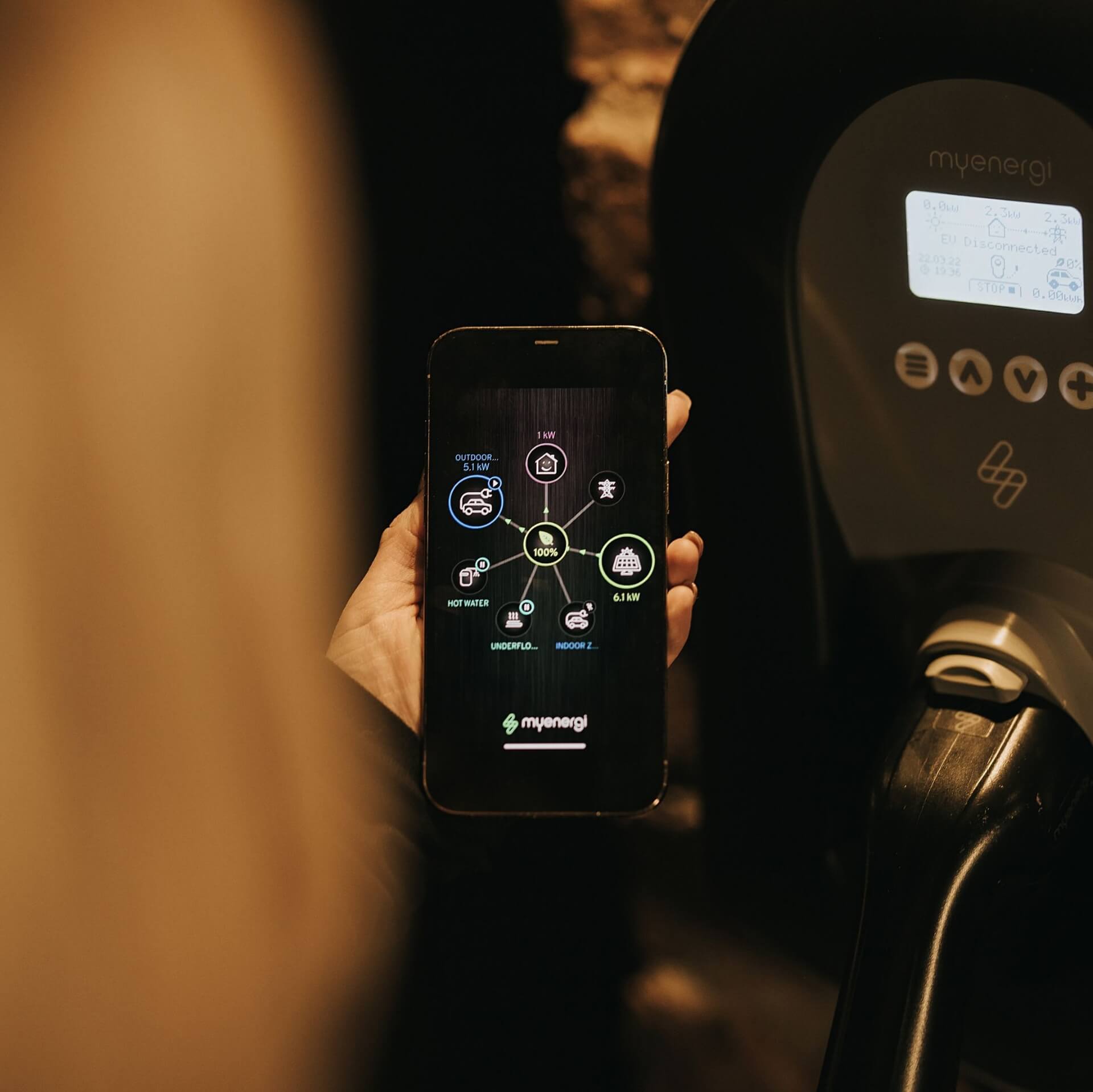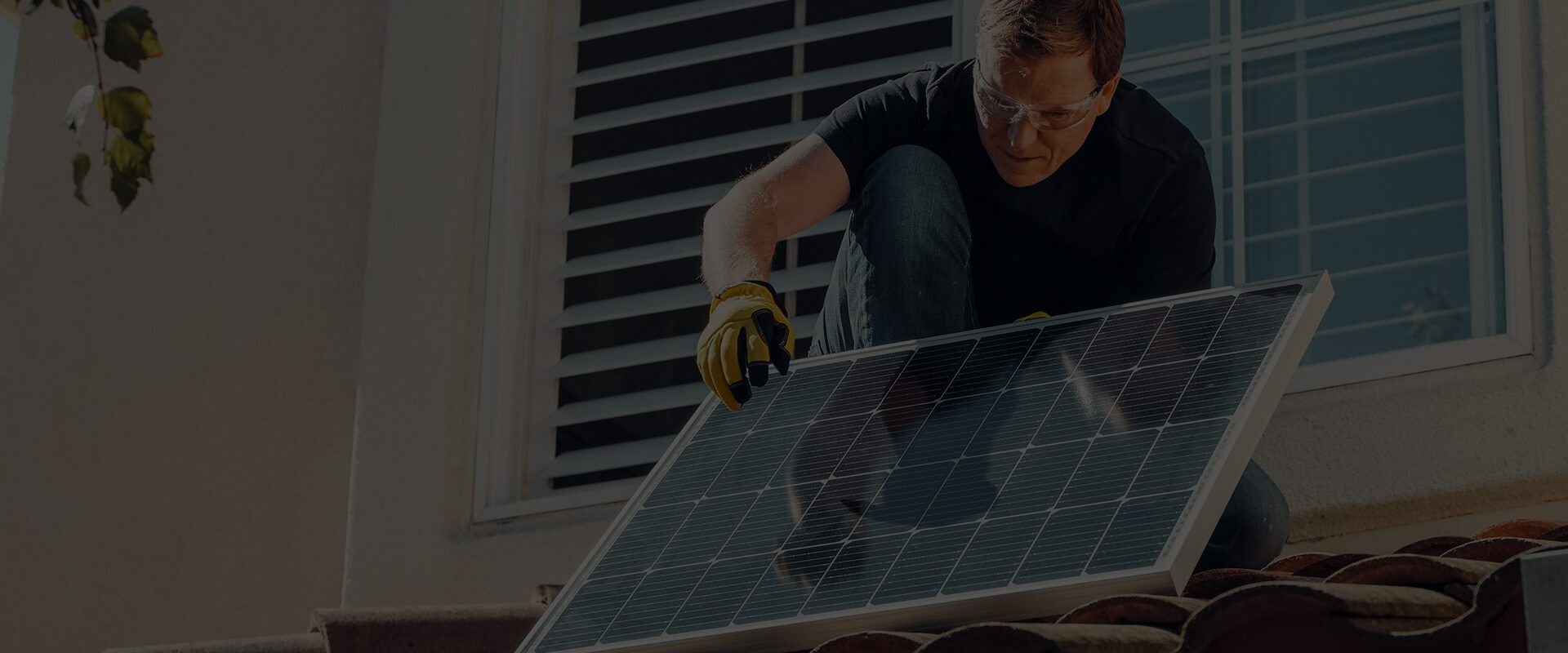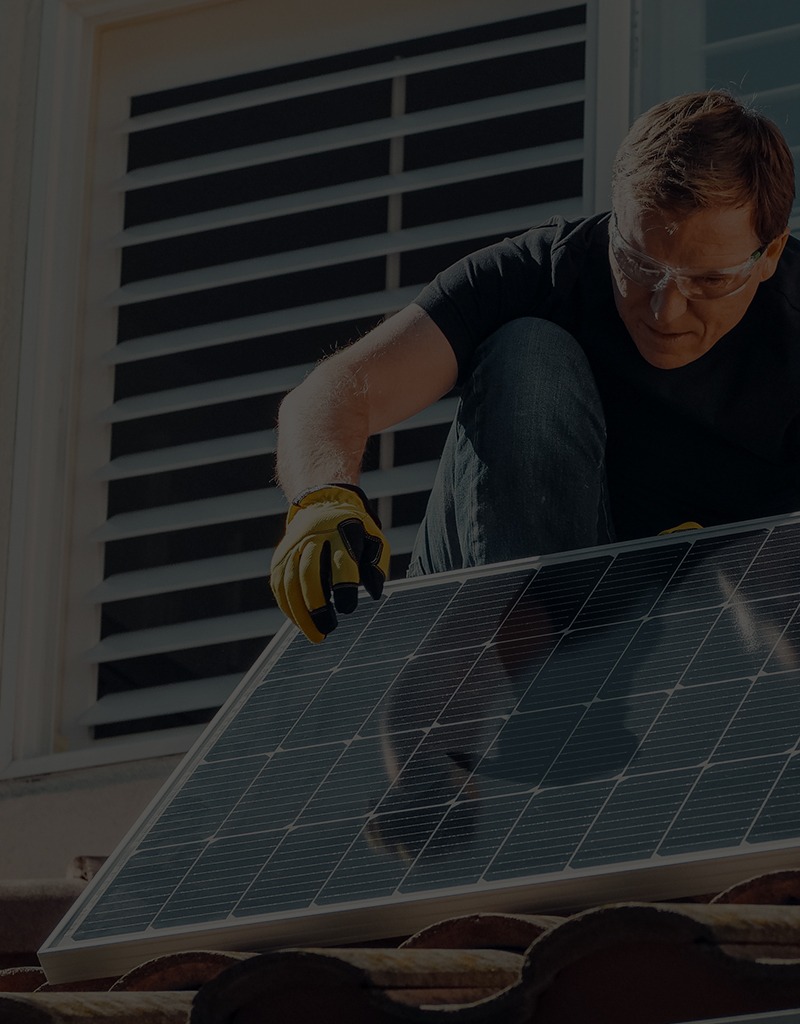In 2017 the world’s first solar car charger the zappi was invented by Robin Richard and Lee Sutton for smart home energy management company myenergi. This pioneering technology was a monumental breakthrough and influential product for other electric car chargers to follow. The solar car battery charger can work like any standard charger if you don’t own solar but has eco settings that allow you to take electricity produced by solar panels and send it straight into charging an electric car or motorbike. This innovative practice, allows you to be driving on sunshine! Railroads, subways, buses, planes, cars and even roads can all be powered by solar, and solar transit is becoming a popular offering in the renewable energy sector.
What is a solar car battery charger?
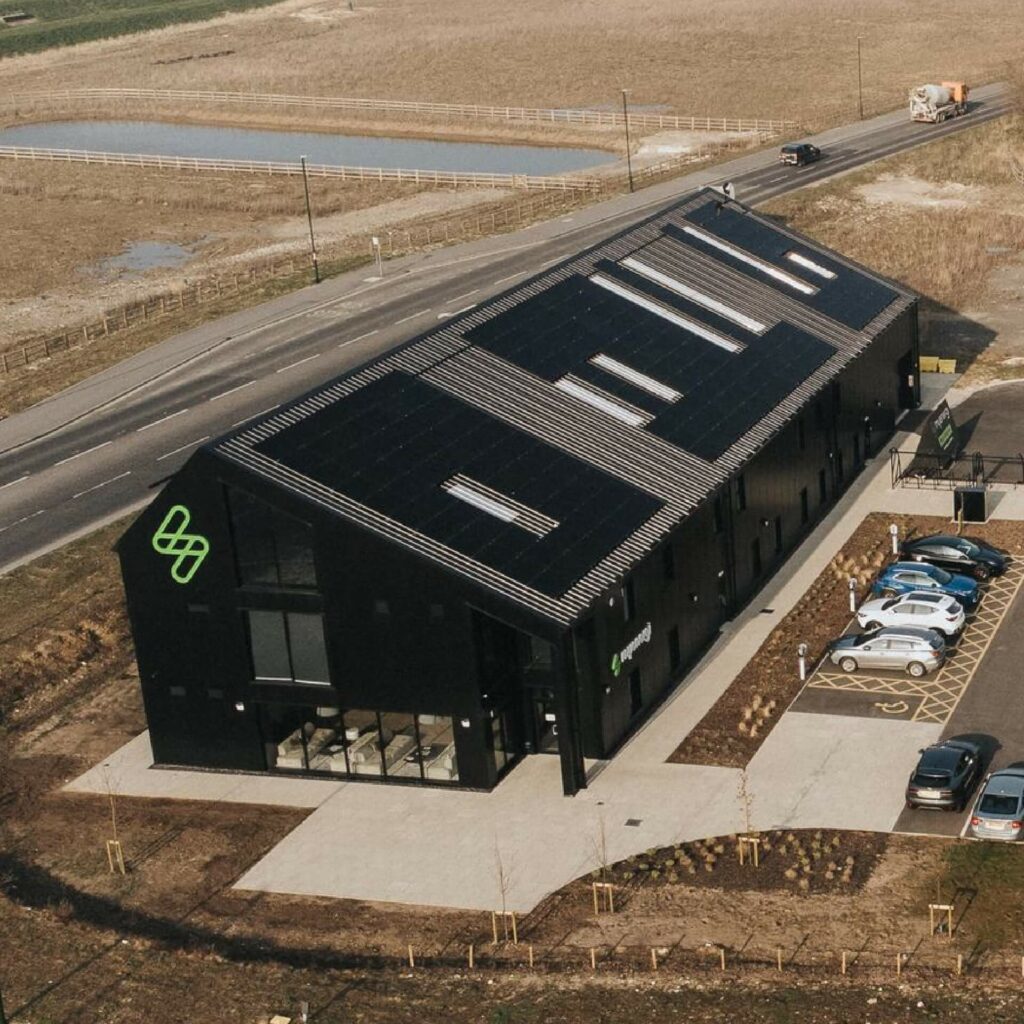
What is Solar energy?
Solar energy can be produced anywhere that the sun reaches and is the earth’s most obtainable source of energy. Solar power is the process of harnessing the energy from the sun and using solar panels to transform sunlight into electricity. Solar panels commonly referred to as; PV standing for ‘photovoltaic’. Work when 3 types of light are converted using cells at an atomic level into electricity. You can now find solar farms both on land and floating on water, generating power for thousands of homes and becoming more popular around the globe making appearances in France, Netherlands, America, UK and many more countries as a source of green energy.
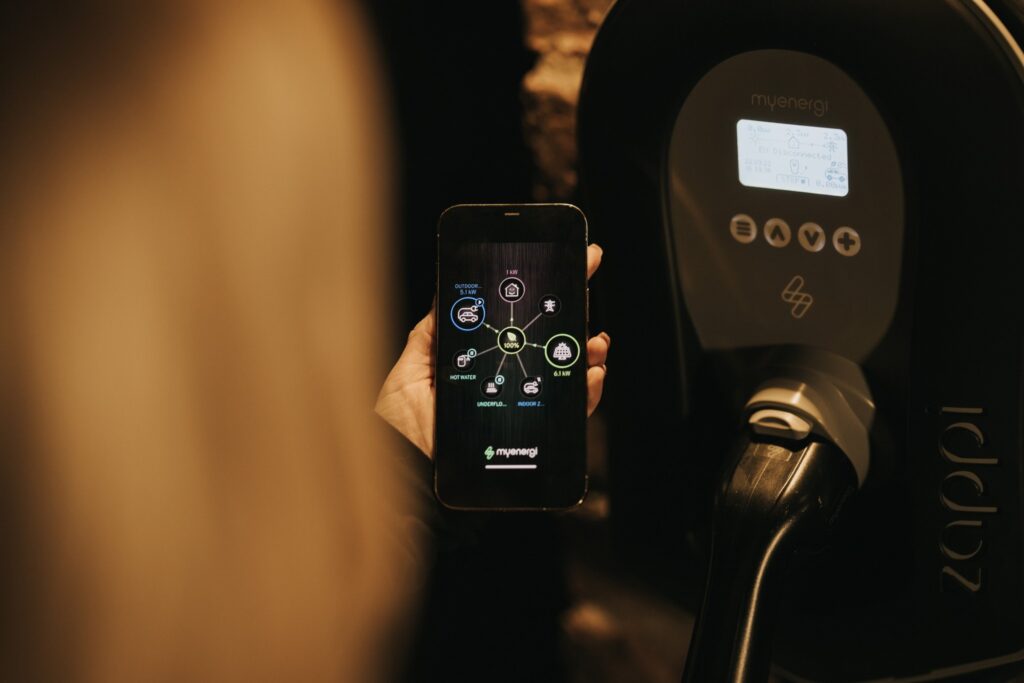
How is solar energy used for transportation?
What is a solar charger?
Charge for free from solar energy
A solar car battery charger works by allowing you to use excess solar to power up your car. Generating solar energy requires solar panels or PV to be fitted to your home or place of work, but the energy generated through the solar panels is totally free!
Charge even when it isn’t sunny
There is a big misconception that solar panels only work on a sunny day. Photovoltaic panels ‘PV’ (solar panels) can use both direct or indirect sunlight to produce power. Although solar panels are most effective in direct sunlight, a rainy day can help clean any dirt or dust off your panels making them work more efficiently. Solar panels will still work even when the light is reflected or partially blocked by clouds.
Another misconception is that solar works from heat produced by the sun, but in fact, when panels are exposed to temperatures above 77 degrees Fahrenheit (25C), they tend to work less efficiently.
How do solar panels charge my car battery?
Light energy produced by the sun is called a photon, It is the most basic, fundamental particle of all light. It is these photons in natural daylight that are converted by solar panel cells to produce electricity. This small bundle of electromagnetic energy is constantly in motion. Simply put, a solar panel works by allowing photons, or particles of light, to bounce into electrons setting them free from atoms, generating a flow of electricity.
Solar panels are comprised of many, smaller parts called photovoltaic cells. (Photovoltaic, as described above simply means the conversion of sunlight into electricity.) Solar panels use the spectrum of colours we are used to seeing (visible) but also ultraviolet and infrared which cannot be seen by the human eye.
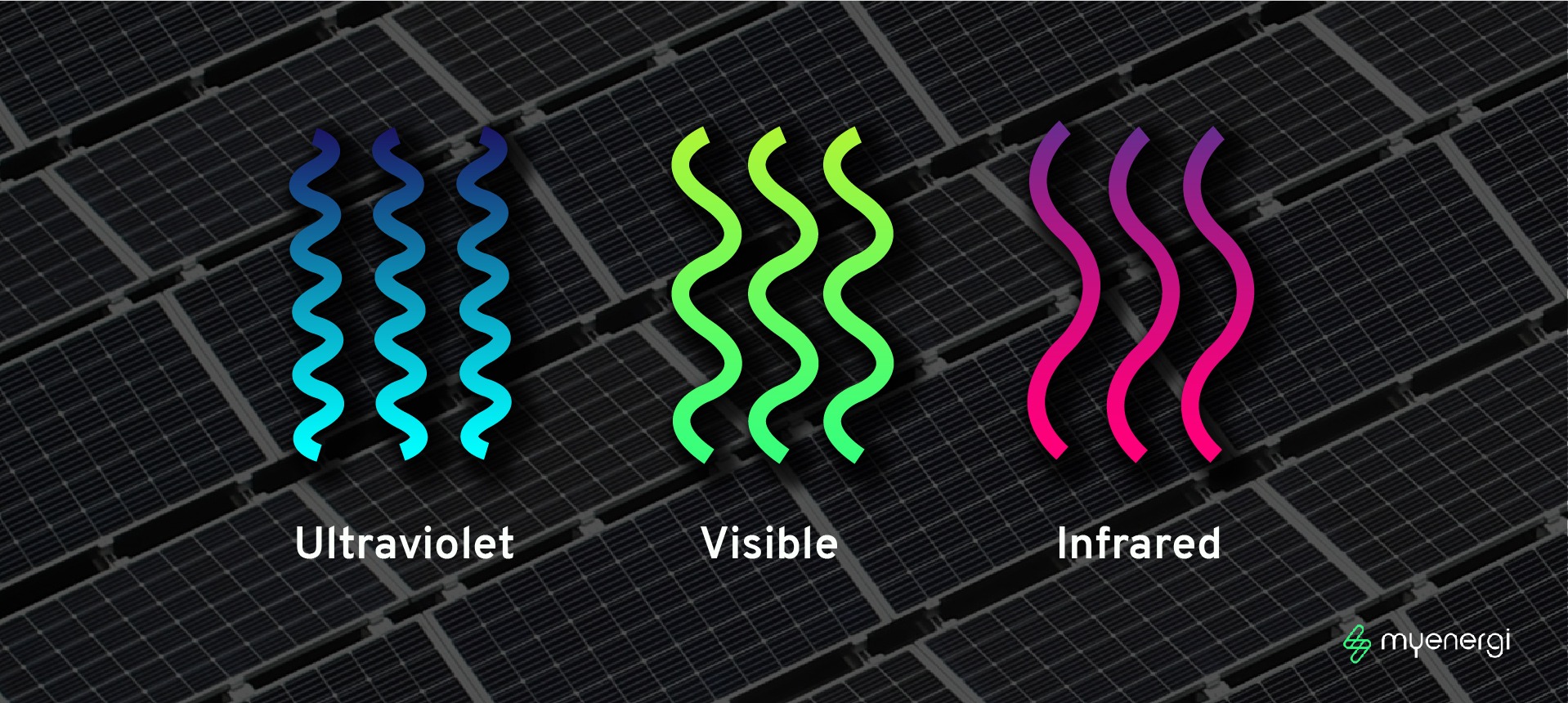

How is energy diverted to power my solar car battery charger?
Introducing eddi: the solar power diverter
Solar diverters take excess energy produced from your renewable energy sources such as solar PV and diverts it into a designated appliance such as an immersion heater or underfloor heating. The myenergi eddi utilises this leftover’ energy making the most of the 100% green energy.
Rather than exporting it back to the grid, your power generation investment becomes more efficient, product diverting the power back to your heating systems.
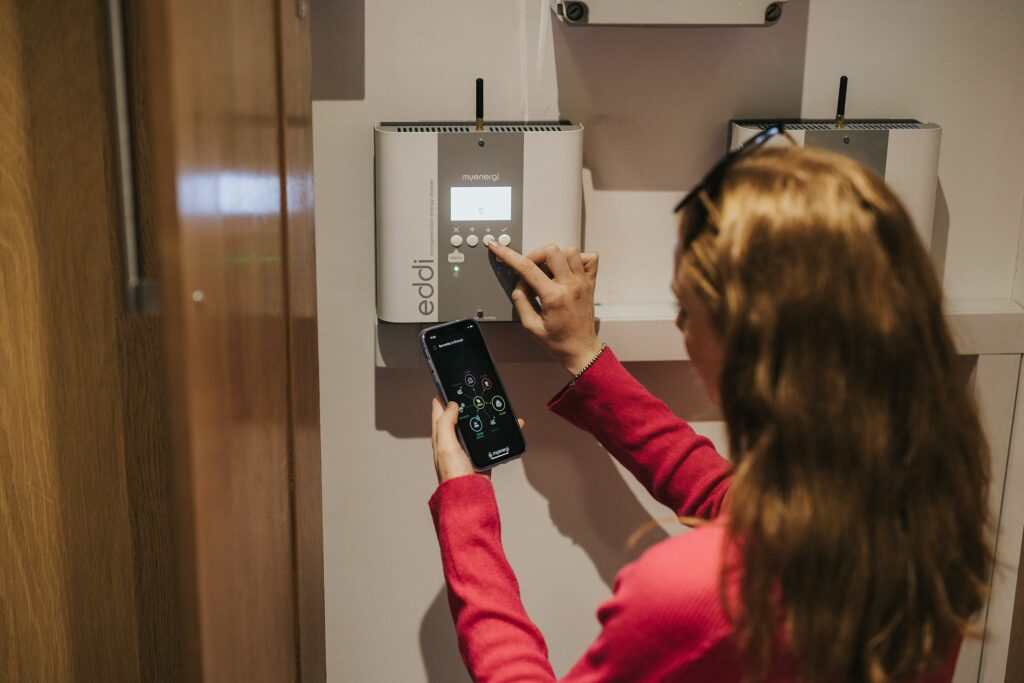
Cost savings by purchasing solar panels
For example, an average-sized home with a 4kW solar panel system that can meet the energy needs of a family of 3 or 4, will spend approximately $11,000 on a PV system. If installed by an MCS certified supplier, it will save you up to $1,600 a year. You can expect to save roughly $499 on electricity bills annually, and together with the Smart Export Guarantee (SEG), you would reach the break-even point within 16-22 years.

